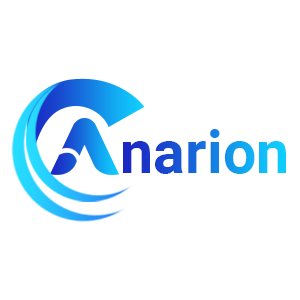Apache Maven VM by Anarion Technologies
Apache Maven: A comprehensive build automation and project management tool primarily designed for Java applications. It streamlines the development process by providing a consistent framework for managing project dependencies, building, and packaging software. Maven uses an XML configuration file, known as `pom.xml` (Project Object Model), to define project structure, dependencies, plugins, and other configurations, enabling developers to maintain a clear overview of their project’s requirements.
Maven promotes best practices in project organization by encouraging a standardized directory layout, which simplifies collaboration among developers. It automates the process of downloading and managing libraries and other dependencies from centralized repositories, reducing the complexity of handling external resources.
Additionally, Maven supports a wide range of plugins that extend its functionality, allowing for tasks such as code analysis, testing, documentation generation, and deployment. With its strong community support and extensive documentation, Maven has become a vital tool in the Java ecosystem, enhancing productivity and ensuring that software projects adhere to industry standards.
To subscribe to this product from Azure Marketplace and initiate an instance using the Azure compute service, follow these steps:
1. Navigate to Azure Marketplace and subscribe to the desired product.
2. Search for “virtual machines” and select “Virtual machines” under Services.
3. Click on “Add” in the Virtual machines page, which will lead you to the Create a virtual machine page.
4. In the Basics tab:
- Ensure the correct subscription is chosen under Project details.
- Opt for creating a new resource group by selecting “Create new resource group” and name it as “myResourceGroup.”
5. Under Instance details:
- Enter “myVM” as the Virtual machine name.
- Choose “East US” as the Region.
- Select “Ubuntu 18.04 LTS” as the Image.
- Leave other settings as default.
6. For Administrator account:
- Pick “SSH public key.”
- Provide your user name and paste your public key, ensuring no leading or trailing white spaces.
7. Under Inbound port rules > Public inbound ports:
- Choose “Allow selected ports.”
- Select “SSH (22)” and “HTTP (80)” from the drop-down.
8. Keep the remaining settings at their defaults and click on “Review + create” at the bottom of the page.
9. The “Create a virtual machine” page will display the details of the VM you’re about to create. Once ready, click on “Create.”
10. The deployment process will take a few minutes. Once it’s finished, proceed to the next section.
To connect to the virtual machine:
1. Access the overview page of your VM and click on “Connect.”
2. On the “Connect to virtual machine” page:
- Keep the default options for connecting via IP address over port 22.
- A connection command for logging in will be displayed. Click the button to copy the command. Here’s an example of what the SSH connection command looks like:
“`
ssh azureuser@10.111.12.123
“`
3. Using the same bash shell that you used to generate your SSH key pair, you can either reopen the Cloud Shell by selecting >_ again
or going to https://shell.azure.com/bash.
4. Paste the SSH connection command into the shell to initiate an SSH session.
Usage/Deployment Instructions
Anarion Technologies – Apache Maven
Note: Search product on Azure marketplace and click on “Get it now”
Click on Continue
Click on Create
Creating a Virtual Machine, enter or select appropriate values for zone, machine type, resource group and so on as per your choice.
After Process of Create Virtual Machine. You have got an Option Go to Resource Group
Click Go to Resource Group
Copy the Public IP Address
SSH into Terminal and run these following commands:
$ sudo su
$ sudo apt update
To verify Version:
$ mvn -version
Run the following command to generate a new Maven project:
$ mvn archetype:generate –DgroupId=com.example –DartifactId=demo –DarchetypeArtifactId=maven-archetype-quickstart –DinteractiveMode=false
This creates a new project in a directory named demo.
Build the Project
Navigate into the project directory and build it:
$ cd demo
$ mvn package
This command compiles the project and packages it into a .jar file.
Check the Output
After running the package command, look for a target directory inside your project folder:
$ ls target
You should see a .jar file (e.g., demo-1.0-SNAPSHOT.jar) if Maven is functioning correctly.
Thanks!!!
All your queries are important to us. Please feel free to connect.
24X7 support provided for all the customers.
We are happy to help you.
Contact Number: +1 (415) 800-4585
Support E-mail: support@anariontech.com



